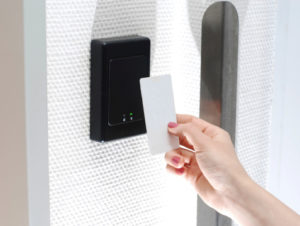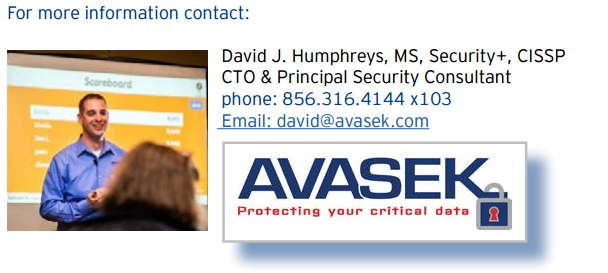When most think of cyber security focus is directed toward the virtual world and not physical security. However, for a complete security program it would be foolish to overlook the physical security aspects of cyber security. This paper will serve to some as guidance to regulatory compliance and others as good general best practices for ensuring the security of critical data.
Download Printable Article >>>
 When thinking about the “security” of your data it is important to understand what issues need to be
When thinking about the “security” of your data it is important to understand what issues need to be
considered. The CIA Triad is a model designed to guide policies for information security within an organization and addresses the confidentiality, integrity, and availability. Confidentiality is typically the first association a personal makes when thinking about security, which is roughly equivalent to privacy. Integrity deals with maintaining the consistency, accuracy, and trustworthiness of data. Availability is achieved through regular maintenance, maintaining necessary system upgrades, providing adequate bandwidth, backups, among others.
With a better understanding of the CIA Triad, let’s apply this physical security model to multi-tenant buildings. Many multi-tenant buildings have shared services when it comes to the maintenance of the building. Janitorial staff, maintenance services, electrical services, and sprinkler systems are just a few examples of shared services. How can you ensure that CIA of your systems in a shared service environment? How are you going to protect your equipment from water damage because of a fire in a neighboring suite that triggered the sprinkler system? If you share an electrical panel with neighboring suites what measures have you taken to make sure a surge from someone else’s doing doesn’t impact your business operations?
Computer equipment is expensive and vital to your business operations. It is imperative that you take measures to protect it. Identifying a location to centralize all of your networking and server equipment so be carefully considered. There should be no windows because of security and sound. A separate air conditioning zone or a wall mount system will ensure that temperature control is maintained. Class A fire resistance ceiling tiles should be installed into the server room and the floor below if above the first floor. 2 or 3-hour fire rated drywall should be installed on all four walls of the server room to minimize the risk of damage. Dedicated electrical circuits should be installed from the electric panel to the server room. If more than one electric panels exist, then a circuit should be installed from each so that dependencies on an individual panel.
Many of the above physical security recommendations may be difficult to implement on a pre-existing structure, however, when moving they can be considered when deciding on an office. Outside of those recommendations there are easy to-implement controls as well. Most are intrigued with the mysteriousness of sophisticated hacking capabilities but in reality most attempts are done with much less sophistication such as watching over someone’s shoulder as they log into a site or simply looking at one’s computer monitor.
Securing less sophisticated physical security concerns
I was at my children’s orthodontist office, which has an open floor plan with individual stations consisting of a dental chair and island that houses the medical supplies and computer for their EMR. The problem is that I can be sitting in the chair for my child’s appointment and take pictures of the computer screen to my left or right for other patients being seen while pretending to surf the internet. The moral of this story is that all information system output devices (monitors, printers, audio devices, etc.) need to be positioned away from general traffic to prevent unauthorized individuals from obtaining the output.
In conclusion, no one can deny the challenges that we face these days when it comes to physical security. Prioritizing risk management is becoming a necessity and will ensure that your business has the resiliency to withstand the unexpected.



